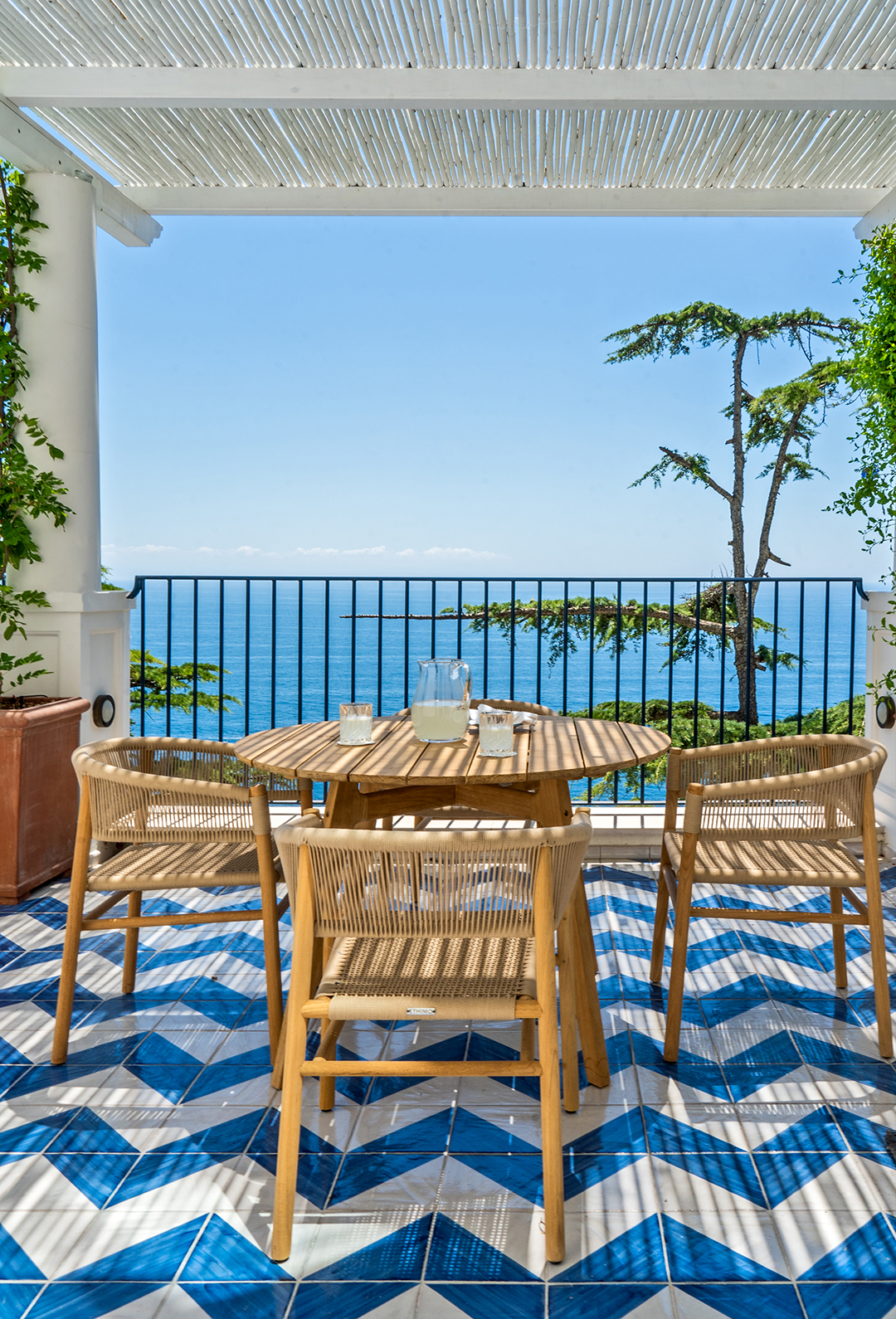A Tile Area Rug Is Just One Idea We’re Stealing From This New Amalfi Coast Hotel
Inspiration is everywhere, from the columns to the balconies.
Updated Nov 2, 2021 11:21 AM
We may earn revenue from the products available on this page and participate in affiliate programs.
The new hotel Borgo Santandrea makes a strong case that tile isn’t so different from fabric. The property, which overlooks the small fishing village of Conca dei Marini on Italy’s Amalfi Coast, treats mixing tiles the same as mixing any other patterns, playing with scale and one color palette. It comes as no surprise that the mid-century interior’s blue and white scheme is a nod to legendary Italian designer Gio Ponti, who established his own tile-heavy hotel in Sorrento in the 1960s. Locally sourcing 31 types of tile for this project took the architects 15 months. From scenic columns to “area rugs,” we’ve broken down our favorite ceramic moments from the cliffside lodging. Now we just need a bathroom to renovate.
Take It Outside
Decorative tile is often saved for indoors, but not at Borgo Santandrea. The terraces are given the same star treatment as the rest of the building, with a sleek navy and white chevron underfoot—the same tile that is used in some of the guest rooms.
Ground Cover
Using tile as flooring is no novelty, but using it to denote individual spaces within an open-concept layout is. In the lobby, the reception desk sits on a “rug” of handmade ceramic tile.
Windows to the Walls
You might think tiling a bedroom would feel cold, but Borgo Santandrea begs you to note the benefits: By extending the bathroom flooring through the rest of the room, the space looks much larger—and more cohesive.
Gossip Column
A mosaic depicting scenes of daily coastal life, a tribute to the town’s locals, adorns the columns in Borgo Santandrea’s restaurant. While the other patterns used throughout the property are largely geometric, this element is clearly hand-painted, adding a personal touch and acting as a visual break from the rest of the hotel. Maybe it’s time to start researching flights—or finding the nearest tile showroom.




